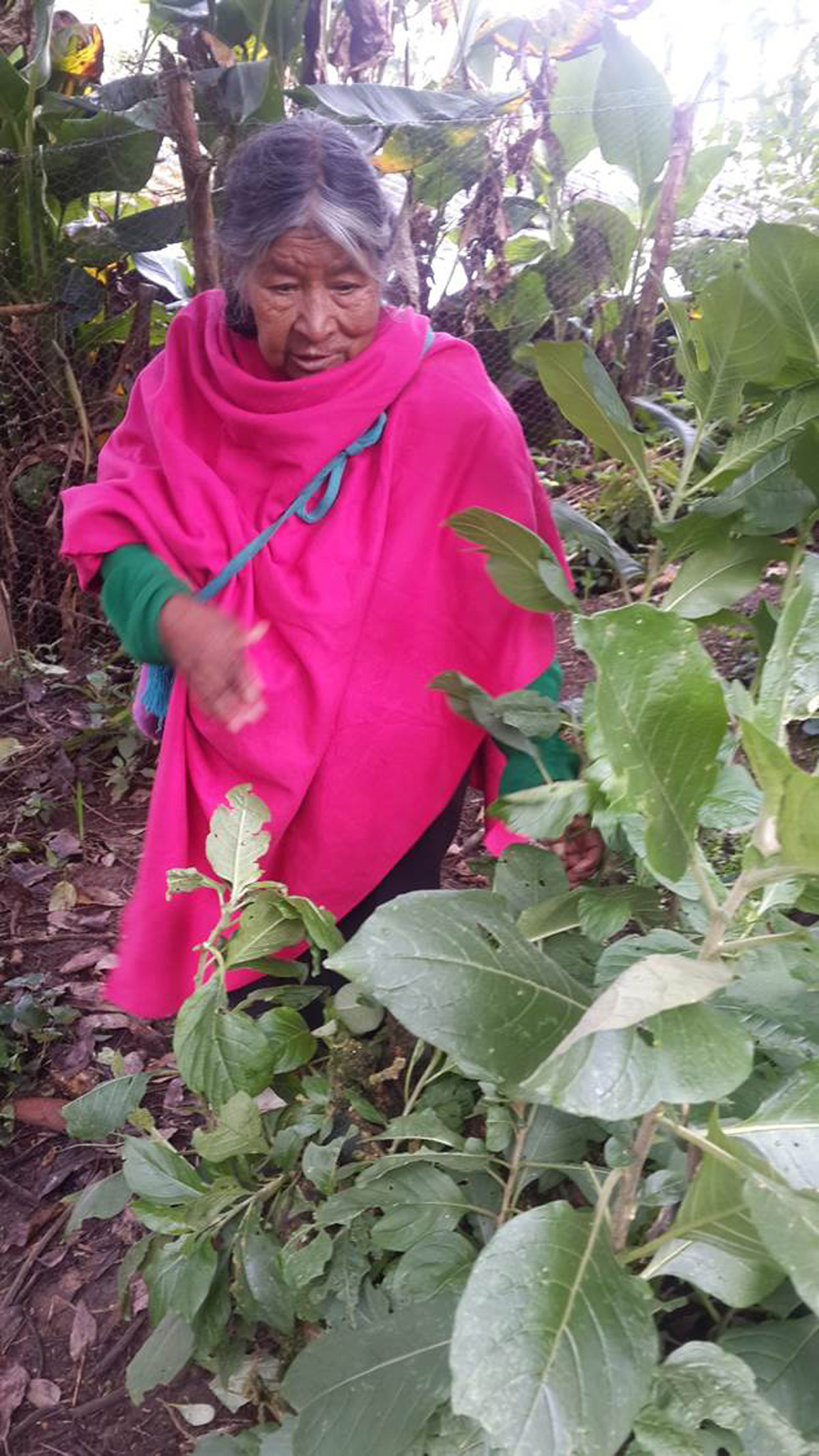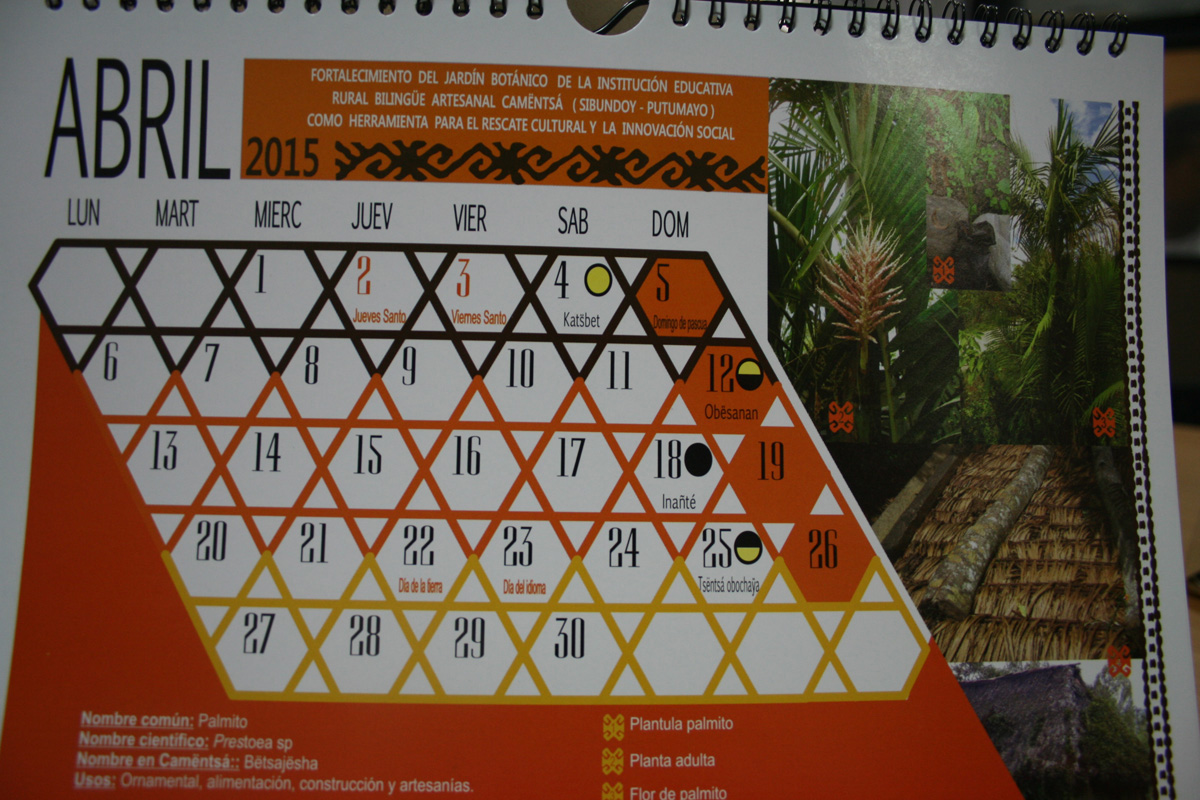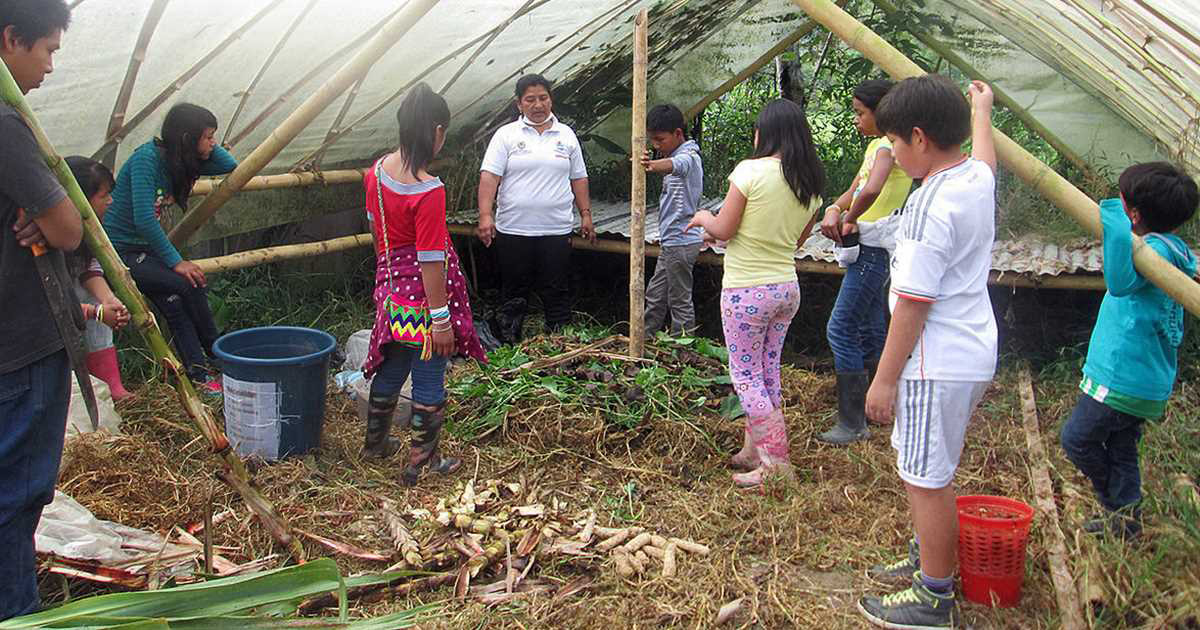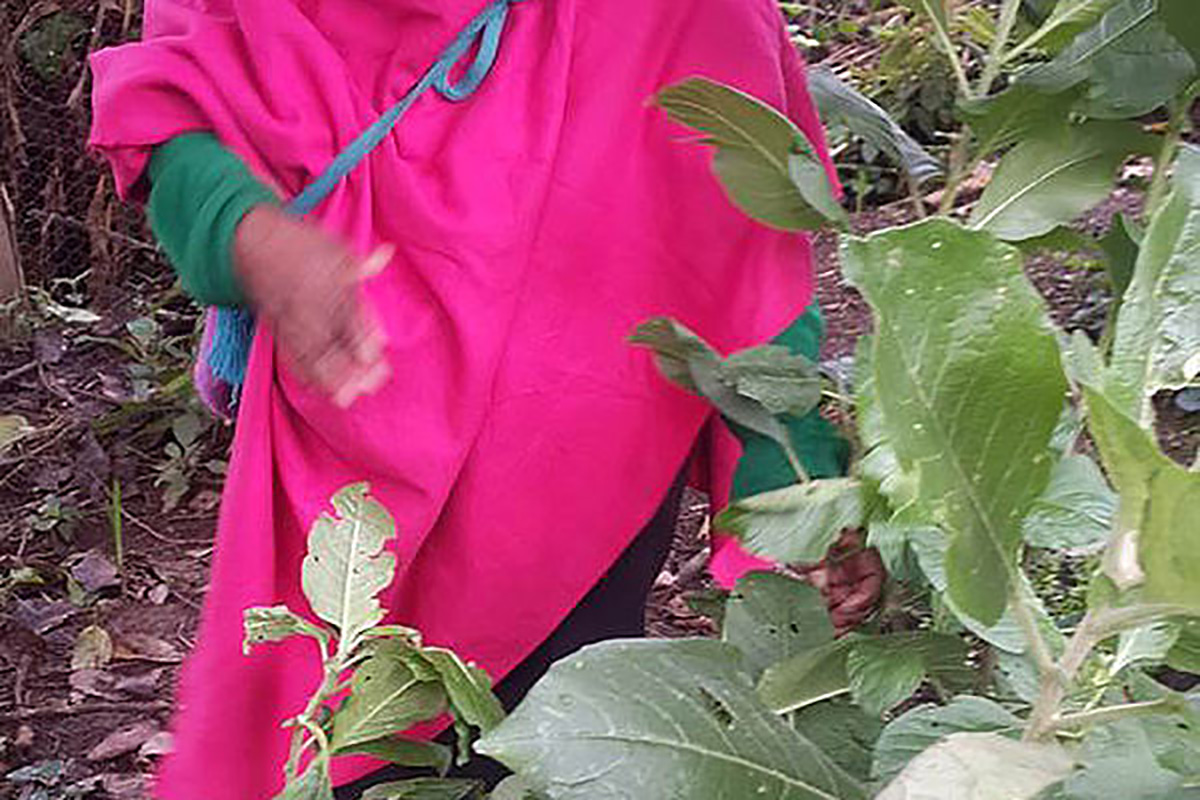"The Sun is at the center of it all and there we plant yagé, the main element of our traditional medicine, the sunrays are then other essential plants linked to health treatments," said José Luis Maigual, Universidad Nacional de Colombia (UNal) in Palmira Agroindustrial Engineering student and member of the community.
These are some of the changes carried out with support from UNal-Palmira researchers to strengthen the Botanical Garden of Sibundoy which has lost fauna and flora diversity.
The botanical garden was created two years ago with the purpose of integrating the members of the Camëntsa Artisanal Rural Bilingual Educational Institution, the academic community and the indigenous community at large.
The main goal of the botanical garden strengthening project besides preserving the cultural identity includes an inventory of ethnobotanical data (plant names, native names and uses) and research to assess possible new uses.
"In traditional knowledge, what is not asked is not told, so if I do not ask my grandfather what a plant is for, I will most likely never know. So closeness between children, youngsters and grandparents is essential for the process," said Maigual.
An example is that students of the educational institution documented and systematized the data of species of the botanical garden as well as the phytogenetic data of the Indian reservation.
The students also collected new material and queried their elders for knowledge in using several seeds which unfortunately are no longer used.
"Sibundoy has many endemic species which have not been botanically described; therefore UNal-Palmira began a taxonomical classification process which included 156 different plant species with up to 10 varieties," said Maigual.
Afterward, they created bilingual documents which will help as input to carry out paperwork regarding intellectual property for use of these plants.
After presenting the project to the authorities of the Indian Council they spread the project with assistance from the community with the Office of the Mayor and UNal-Palmira.
Although the term "botanical garden" was strange for the members of the community (they are more used to chagra or a traditional orchard) they visited botanical gardens of the Province of Quindío and the city of Tuluá to use as references.
They also helped with advice and assistance building several structures such as the floor of the maloka, trails, and bridges to make the place more attractive as well as rebuilding the nursery garden to propagate seed for use at the botanical garden and the community.
Currently they are designing a bilingual booklet which gathers the main aspects of the project to strengthen their culture; furthermore, they are also working on a scientific article so the phytogenetic heritage of the institution may be publicized.
 Correo Electrónico
Correo Electrónico
 DNINFOA - SIA
DNINFOA - SIA
 Bibliotecas
Bibliotecas
 Convocatorias
Convocatorias
 Identidad UNAL
Identidad UNAL







